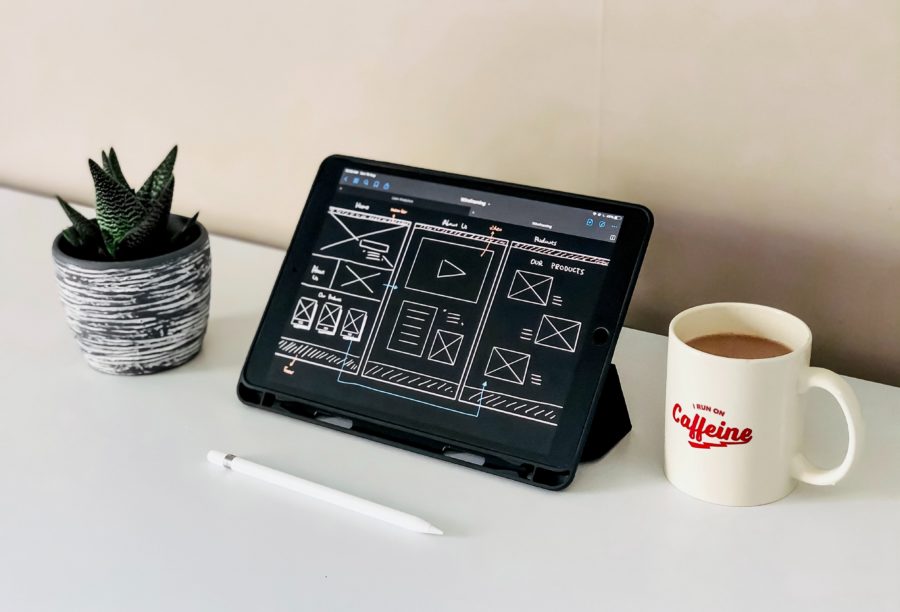
Estimated reading time: 6 minutes
User experience matters a lot when it comes to designing any website. It is the first thing that comes to the notice of visitors. Hence, designers should keep their point of view in mind when building websites. If users find it difficult to interact with any website, they will certainly leave it after a particular amount of time. Designing a website frontend creatively will help avoid this situation. It helps to engage people’s attention, enabling them to surf and navigate freely on the website.
Nowadays, web designers are using different types of techniques to bring innovation to the website frontend. Among different practices known today, creating an immersive website looks to be the preferred choice of everyone. It is quite different from conventional UI designing, because the frontend is built using interactive elements. The primary purpose of this website design is to engage people by showcasing an interactive frontend. It is dynamic, illustrating stunning visuals of different components interacting live with each other.
Related Links
The designing of an immersive automated UI is however a difficult job. It requires in-depth technical knowledge of dynamic frontend designing, as well as a good grip on advanced languages. Besides that, you should also know some common techniques that can help you to build eye-catching immersive website. If you do not know much about them, this article would prove to be a good read for you. It will let you know about some of the best techniques you could use for immersive frontend designing.
But, before moving straight into that, let us first start from the basics below understanding the core definition of an immersive website.
What Is An Immersive Website?
Immersive websites are precisely created to offer a unique visual experience to people. The primary purpose of creating such a layout is to bring a complete dynamic view to the website. All the components showcased on the front are carefully created to build a perfect matchup of immersive experiences. By combining them all, a cohesive view of the website is presented that is dynamic and interactive from every angle.
With the help of creative visual content, immersive UI helps to connect people with the website on a deeper level. The elements presented in the UI are completely interactive, meaning that they can respond to user actions accordingly. This is the major reason why the immersive layout is considered different from the conventional design. It offers an experience that increases curiosity, influencing users to explore the whole website paying full attention to the details.
Websites built on immersive layouts can also vary from one another. It is dependent on the complexity, as well as the theme that is intended to showcase to the people. From digital VR to a simple 3D layout showcasing sticky navigation menus, things can vary according to the objectives of every website. It is therefore recommended to first learn the overall concept of immersive designing properly so that you can take on all types of projects without facing any technical confusion.
Best Techniques To Create Immersive Automated UI Layouts
There are various techniques with which you can create quality immersive UI layouts. In this blog, we will discuss some of them, so that you can know which techniques are preferred more by the designers. Let’s take a look at them in detail below.
Three-Dimensional Visuals

Most of the websites today are built using normal visuals. They are usually static, which is why do not offers any interaction. However, with the idea of immersive user experience, this trend is getting changed. Now, web designers are using three-dimensional visuals to bring creativity to the frontend. They understand the complexity of these visuals, which is why always go through a process to design them properly. It helps to create eye-catching 3D graphical content precisely as per industry standards.
Some websites use simple 3D elements in the homepage of a website, while some go for advanced techniques like implementing AR/VR experience in the frontend. Using techniques like augmented reality requires a good knowledge of the principles of design. If any designer has not got his basics cleared in this area, then it would become difficult for him to catch up with this trend. So, always remember to get your bases right while working with three-dimensional visuals, especially if they are intended to offer AR/VR experience.
Micro-Interactions
Micro-interaction is a key process in building an immersive website. It refers to the combination of elements that offer quick responses once the user clicks them. For instance, if any ball is designed on the front page, it will immediately start spinning once a user hovers or clicks on it. That represents the main idea of an immersive experience. It is something that can be implemented on different UI components in a variety of ways. The mode of interaction would be decided by the designers, as to how they want the users to interact with their website.
To create such a highly responsive website layout, you just need to work with different frontend frameworks like Angular, Vue.js, React, and others. They provide the functionality to build responsive UI components, precisely as per the latest web design trends. So, try to first get a good grip on these frameworks, as that will build your base to create quality front-end designs later.
Parallax Scrolling
Parallax scrolling is yet another great technique to add the effects of an immersive layout to your website. It is not like conventional scrolling in which you will just scroll up or down the page typically. It is different in terms of keeping the main background intact and changing elements in the foreground continuously. This type of feature can only be added by using responsiveness in the core components of the page. That will certainly require in-depth knowledge about responsive designing, and how it is done using the latest frontend frameworks accordingly.
With the help of parallax scrolling, the attention of people can be quickly grabbed towards the swift responsiveness of the website. And the good thing about this technique is that it is not just limited to vertical scrolling, you can also use it for horizontal scrolling from left to right or vice versa. That is how your main background will remain still, while the visual elements present in the foreground will keep on changing to give a unique look to the website layout.
Final Words
That brings us to the end of this blog in which we have discussed about immersive website designs in detail. It is certainly a unique technique to make the frontend of any website highly interactive. It ensures to give people a seamless responsive experience every time they visit the website to inquire about the company’s services or products. The designing of this layout is however a difficult job, as it requires a greater level of technical expertise in different languages and frontend design methodologies.
It is therefore recommended to first elevate your skills on core frontend tools and frameworks so that you can build quality UI layouts for all types of web applications. Not just that, but this layout can also be implemented in the design of mobile apps, as the method and process also remain the same there.

